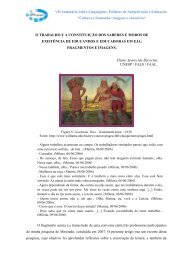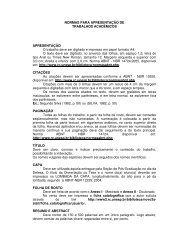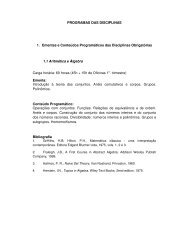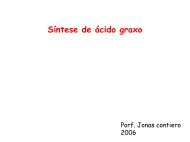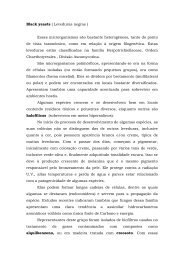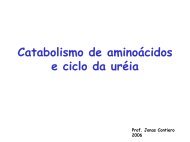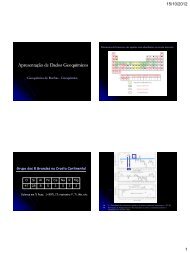Diet and Spatial Pattern of Foraging in Ectatomma opaciventre ...
Diet and Spatial Pattern of Foraging in Ectatomma opaciventre ...
Diet and Spatial Pattern of Foraging in Ectatomma opaciventre ...
You also want an ePaper? Increase the reach of your titles
YUMPU automatically turns print PDFs into web optimized ePapers that Google loves.
616 Sociobiology Vol. 58, No. 3, 2011<br />
periods than closer areas. This would expla<strong>in</strong> the higher number <strong>of</strong> <strong>in</strong>dividual<br />
forag<strong>in</strong>g pathways <strong>of</strong> E. <strong>opaciventre</strong> closer to the nest.<br />
Therefore, forag<strong>in</strong>g strategies seem to depend upon several ecological<br />
variables, such as the distribution <strong>of</strong> food resources <strong>in</strong> time <strong>and</strong> space, food<br />
size <strong>and</strong> quality, competition, <strong>and</strong> predation. A colony must then have a spatial<br />
pattern <strong>of</strong> forag<strong>in</strong>g to collect food effectively <strong>and</strong> m<strong>in</strong>imize the chance<br />
<strong>of</strong> competition, <strong>in</strong> order to assure less energy waste <strong>and</strong> a greater <strong>in</strong>put <strong>of</strong><br />
resources <strong>in</strong> the shortest time.<br />
CONCLUSION<br />
The diversity <strong>of</strong> prey collected by E. <strong>opaciventre</strong> <strong>in</strong> the area studied was<br />
low, most probably because <strong>of</strong> the poor variety <strong>of</strong> species <strong>in</strong> the degraded<br />
environment <strong>and</strong> because the observations were carried out <strong>in</strong> the dry season.<br />
Collect<strong>in</strong>g other ant species as the major part <strong>of</strong> its diet was likely due to the<br />
abundance <strong>and</strong> high richness <strong>of</strong> <strong>in</strong>dividuals belong<strong>in</strong>g to several subfamilies <strong>of</strong><br />
Formicidae <strong>in</strong> the area studied. The forag<strong>in</strong>g trails <strong>of</strong> E. <strong>opaciventre</strong> presented<br />
a pattern similar to those observed <strong>in</strong> other Ectatomm<strong>in</strong>ae studied. With a<br />
s<strong>in</strong>uous pr<strong>of</strong>ile <strong>and</strong> directional fidelity, these trails avoid competition with<br />
other nests <strong>and</strong> lead to a better division <strong>of</strong> the resources explored. Although<br />
most trips were unsuccessful, the foragers did not stray too far from the nest,<br />
nor did they spend too much time forag<strong>in</strong>g. S<strong>in</strong>ce the area was dom<strong>in</strong>ated by<br />
grass, <strong>in</strong>tense sunlight <strong>and</strong> heat was present, which could have caused the ants<br />
physical exhaustion if they had extended the time spent outside the nest.<br />
ACKNOWLEDGMENTS<br />
We thank the National Council for Scientific <strong>and</strong> Technological Development<br />
(CNPq) for the f<strong>in</strong>ancial support.<br />
REFERENCES<br />
Azevedo, D.L.O. 2009. O papel das rotas e da obtenção de <strong>in</strong>formações sobre a eficiência<br />
no forrageio de D<strong>in</strong>oponera quadriceps em ambiente natural. Tese de mestrado em<br />
Psicobiologia pela Universidade Federal do Rio Gr<strong>and</strong>e do Norte, Natal/RN, 83p.<br />
Baader, A. P. 1996. The significance <strong>of</strong> visual l<strong>and</strong>marks for navigation <strong>of</strong> the giant tropical<br />
ant, Paraponera clavata (Formicidae, Poner<strong>in</strong>ae). Insectes Sociaux, 43: 435-450.<br />
Beckers, R., S. Goss, J.L. Deneubourg, & J.M. Pasteels 1989. Colony size, communication<br />
<strong>and</strong> ant forag<strong>in</strong>g strategy. Psyche, 96: 239-256.




